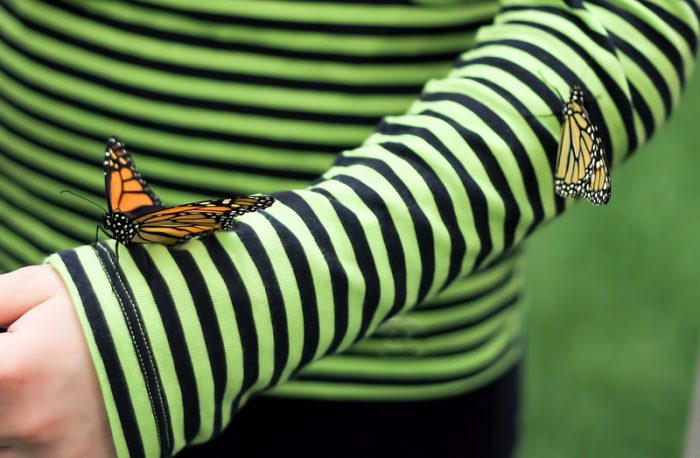Across Canada, reports are coming in of everyday citizens who are making their own hatching stations for monarch butterflies. By planting milkweed, collecting eggs in the wild, and building makeshift shelters out of aquariums or wooden frames, they're raising monarchs in and around their home—from caterpillar to chrysalis to adult.
Sounds like a lovely idea. After all, we're talking about a truly beautiful insect here—there's a reason it has such a regal name! But why all of the interest? Turns out that in only a couple of decades, the monarch has gone from being one of the more plentiful butterflies out there to being in serious trouble.
And when you put on a show as great as they do, people take notice.
A royal migration
The monarch butterfly migration is one of the most spectacular—and unexpected—long-distance journeys in the animal kingdom. Every fall (pretty soon now, actually!), millions of monarchs begin to travel from southern Canada and the United States all the way down to central Mexico to spend the winter. Once they get there, there are trees in Mexico that end up looking like this ...
(Getty Embed)
The trees are absolutely covered inch-by-inch with hibernating butterflies! Then, as the weather warms and the butterflies recover their strength, guess what? It's time to do it all over again!
(Getty Embed)
As you'd expect, scientists track this phenomenon from year to year ... but they've found a problem. Since the 1990s, the number of these monarch butterfly migrations are decreasing dramatically. Two decades ago, winter monarchs covered 44 acres of trees in Mexico. In 2018, that number was down to about 6 acres—part of an 80% population decline. It's become so worrying that Canada named the monarch butterfly an endangered species in 2016.
What's a butterfly lover to do?
Milk maids
Coming in for a landing on some milkweed. (Getty Embed)
You plant some 'weeds'. Milkweed to be precise.
Milkweed is the only plant that monarchs feed on. It's everything to them. They lay their eggs on it. The caterpillars eat their fill there, before turning into a chrysalis. You could say, no milkweed, no monarchs.
Which is exactly what experts are noticing. Whether by urban development or modern herbicides (chemicals that kill everything but a farmer's desired crop) milkweed is increasingly being removed from traditional butterfly habitats.
An egg and a newly-hatched caterpillar. (Getty Embed)
So people like Sarah Pappin of Sudbury, Ontario, and the Moores from Hiawatha First Nation are making their own hatching stations to each raise over 100 individual butterflies. As Sandra Moore told the CBC recently, "It's really miraculous to see it and to know that you started from this little egg." People like this spend their summer visiting nearby fields, looking for milkweed to bring home and collecting eggs. It takes time, but they clearly find it rewarding!
"It's always exciting," Pappin said to the CBC. "(The butterflies are) gentle, you can sit with them on your hand for a few minutes."
Want to give it a try?
A chrysalis forming. (Getty Embed)
The season for raising butterflies may be coming to a close, but there's always next year! If you would like to become a monarch butterfly buddy, you can find some great tips here. Even planting some milkweed around your home can help!
 Monarchs are gentle insects that can use our help. (© Theresa Weaver - Dreamstime.com)
Monarchs are gentle insects that can use our help. (© Theresa Weaver - Dreamstime.com)










The butterfly is so cute. Orange Butterfly is Butterfly. The butterfly. flapping the wings.